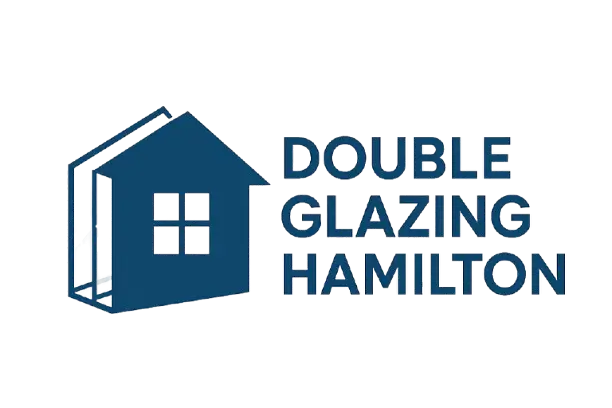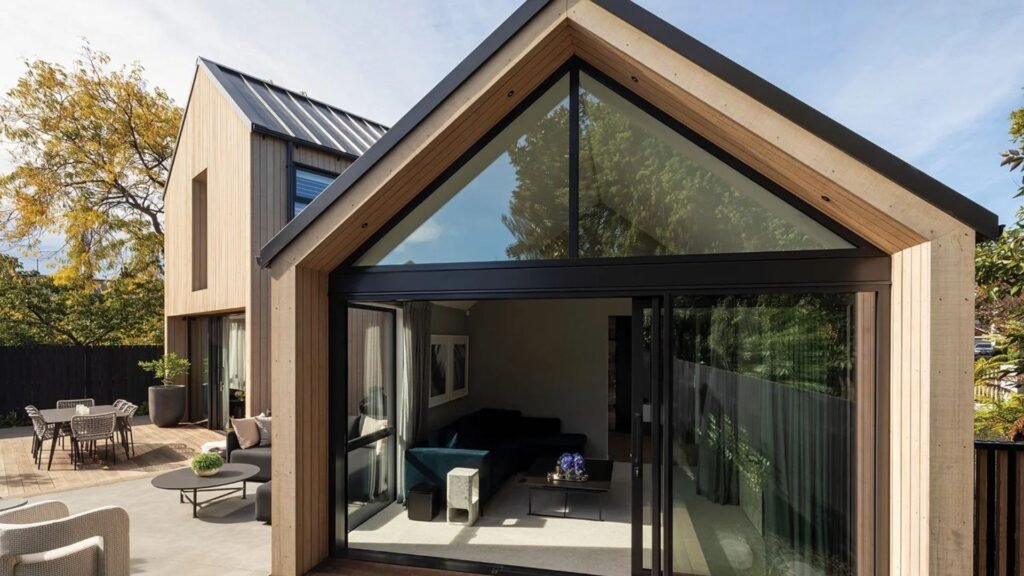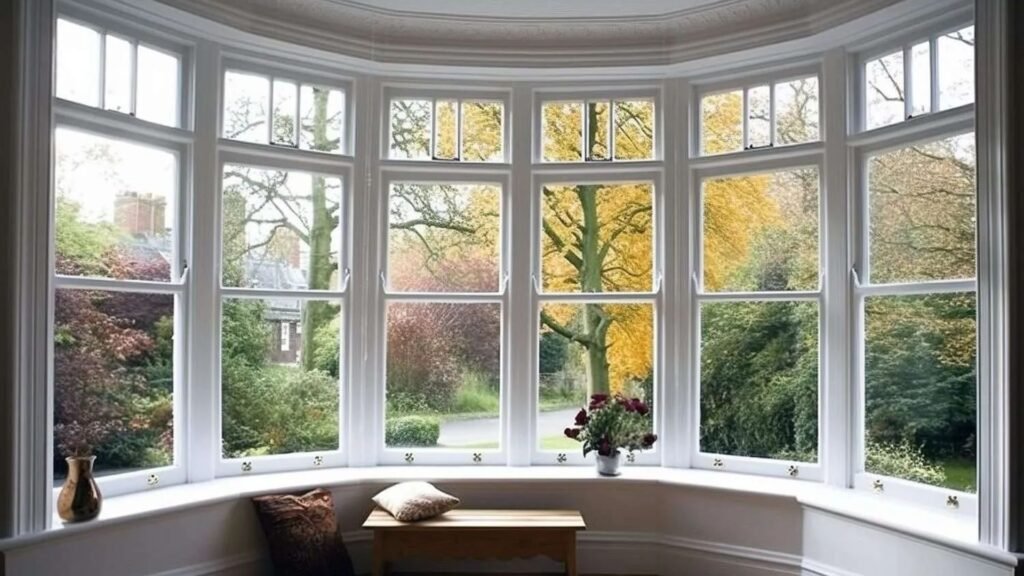Welcome to our guide on Low-E glass in New Zealand, where we break down what it is, how it works, and why it’s becoming such a popular choice for Kiwi homes. If you’ve ever wondered why some houses stay warmer in winter and cooler in summer, the answer often comes down to the type of glass in the windows. Low-E, short for “low emissivity,” is a special glass with an invisible coating designed to improve energy efficiency, reduce UV damage, and create more comfortable living spaces. With New Zealand’s unique mix of cold southern winters, humid northern summers, and rising energy costs, more homeowners are turning to Low-E glass as a smart solution for better insulation and long-term savings. In this article, we’ll explore everything you need to know about Low-E glass in NZ, from how it works to its benefits, costs, and whether it’s the right choice for your home.
Low-E glass in New Zealand is a type of energy-efficient window glass with a nearly invisible coating that reduces heat loss in winter and reflects excess heat in summer. It helps Kiwi homes stay warmer, lowers power bills, reduces condensation, and protects furniture from UV damage. Low-E glass is commonly used in double glazing and is becoming a popular choice for new builds and renovations across NZ.
Table of Contents
What Is Low-E Glass?
Simple Definition
Low-E glass is window glass with a microscopically thin, invisible coating that helps control heat. It lets plenty of daylight in while managing the heat you feel. In winter, it reflects warmth back into your rooms. In summer, it reduces the amount of outside heat that enters. If you’re searching for what is low-e glass nz, think of it as energy-smart glass for Kiwi homes.
What Low Emissivity Means
Emissivity is a measure of how much heat a surface gives off. A low-emissivity (Low-E) coating gives off less heat and reflects more of it. The coating targets invisible infrared energy, which carries heat. By reflecting long-wave infrared back toward its source, the glass helps keep indoor heat inside during cold months and limits solar heat gain during hot months. It also cuts a large portion of UV rays that fade furniture and flooring, while keeping visible light clear and bright. Many New Zealand window units pair Low-E glass with double glazing and gas fills to boost insulation even further.
A Smarter Sunglasses Comparison
Think of Low-E glass like sunglasses for your windows, but smarter. Sunglasses reduce glare you can see. Low-E glass manages heat you can’t see. It filters the harmful UV that fades your interiors and bounces unwanted infrared heat away, all while keeping your rooms bright. You enjoy clear views, better comfort, and steadier temperatures without darkening your home or relying only on heavy curtains or blinds.

Why Low-E Glass Matters In New Zealand
When it comes to choosing the right windows for your home, climate plays a big role, and New Zealand has one of the most diverse climates in the world. In the South Island, winters can be long, cold, and frosty, while in the North Island, summers are often humid and uncomfortably warm. These extremes create a constant challenge for homeowners who want a comfortable indoor environment without relying too heavily on heating and cooling systems. This is where Low-E glass becomes especially important, as it helps balance indoor temperatures and reduces the impact of New Zealand’s changing seasons.
Cold Winters In The South Island
In areas like Canterbury, Otago, and Southland, winter nights often drop well below freezing. Standard glass struggles to hold in warmth, meaning homes lose heat quickly. With Low-E glass, the invisible coating reflects heat back inside the room, reducing heat loss and keeping living spaces warmer for longer. This not only improves comfort but also reduces the need to run heaters for extended periods, lowering household energy costs.
Hot And Humid Summers In The North Island
Regions such as Auckland and Northland face the opposite problem, where high humidity and hot summer days make it difficult to keep homes cool. Traditional windows let in excess solar heat, causing indoor temperatures to climb. Low-E glass works by reflecting infrared light, limiting how much heat passes through the glass. This helps homes stay cooler naturally, reducing the need for air conditioning and lowering electricity bills during peak summer months.
Rising Energy Costs And Efficiency Goals
Energy costs across New Zealand continue to rise, and many families are looking for practical ways to save money without sacrificing comfort. Low-E glass directly addresses this challenge by improving insulation, which reduces the demand for both heating and cooling. Over time, the energy savings add up, making Low-E glass a cost-effective investment for households across the country.
Meeting New Building Standards
The New Zealand government has introduced new building code updates that place greater emphasis on energy efficiency and sustainable housing. Windows are a key focus in these standards, as they are one of the main sources of heat loss and gain in a home. Low-E glass is now seen as a smart way to meet these requirements while also supporting the shift toward greener, healthier, and more sustainable homes. Builders, architects, and homeowners are increasingly turning to Low-E glass to ensure new builds meet both current standards and future expectations.
A Smarter Choice For Kiwi Homes
By addressing New Zealand’s unique climate challenges, helping reduce power bills, and supporting nationwide sustainability goals, Low-E glass has become more than just a modern window upgrade, it is quickly becoming a necessity for homes across the country. Whether you live in the cold South or the warm North, choosing Low-E glass can make your home more comfortable, energy-efficient, and future-ready.
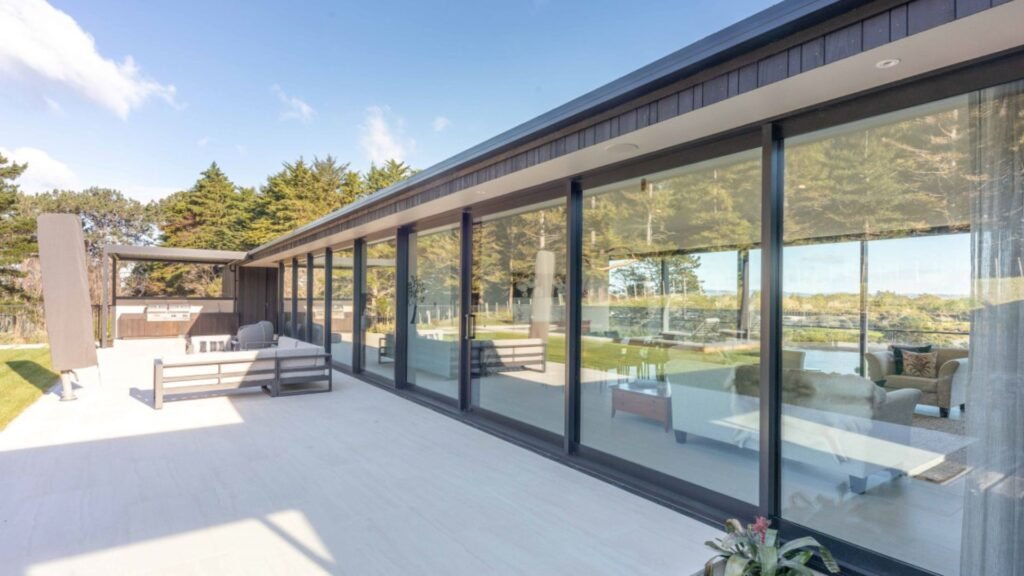
How Low-E Glass Works
Low-E glass, short for low emissivity glass, is designed to improve comfort and energy efficiency inside your home. At its core, this special glass has a microscopically thin, transparent coating that works like a filter. The coating is nearly invisible, so you can still enjoy plenty of natural light, but it plays an important role in controlling how heat and light move through your windows.
Reflects Heat And Controls UV Light
The coating on Low-E glass reflects heat back to its source. During the day, it reduces the amount of solar heat that enters your home, keeping indoor temperatures cooler and more stable. At the same time, it blocks harmful ultraviolet (UV) rays, which are responsible for fading furniture, carpets, and curtains. Because UV rays also pose health risks such as skin damage, Low-E glass provides an added layer of protection for families who spend a lot of time indoors near large windows.
Keeps Heat In During Winter
In the colder months, Low-E glass helps prevent valuable heat from escaping. Standard glass allows heat from your heating system to leak outdoors, making it harder to keep rooms warm. The special coating on Low-E glass reflects this radiant heat back into the room, which reduces energy loss and lowers heating costs. For homeowners in colder regions of New Zealand, this makes a noticeable difference in comfort and energy savings.
Reflects Heat Out During Summer
When the weather warms up, Low-E glass works in the opposite way. Instead of letting heat from the sun pour into your home, the coating reflects much of it back outside. This helps maintain cooler indoor temperatures, reduces the need for constant air conditioning, and makes living spaces far more comfortable. For homes in areas with hot summers, this feature can cut energy use and keep power bills under control.
Health Benefits Of UV Protection
One of the overlooked advantages of Low-E glass is its ability to reduce exposure to harmful UV rays. While sitting near a sunny window may feel pleasant, constant UV exposure can damage skin over time. By blocking a significant portion of UV light, Low-E glass lowers these risks. It also helps protect your interiors, ensuring that wooden flooring, fabric couches, and treasured décor items don’t fade or wear prematurely. This makes it a practical choice for families who want a healthier and more durable home environment.
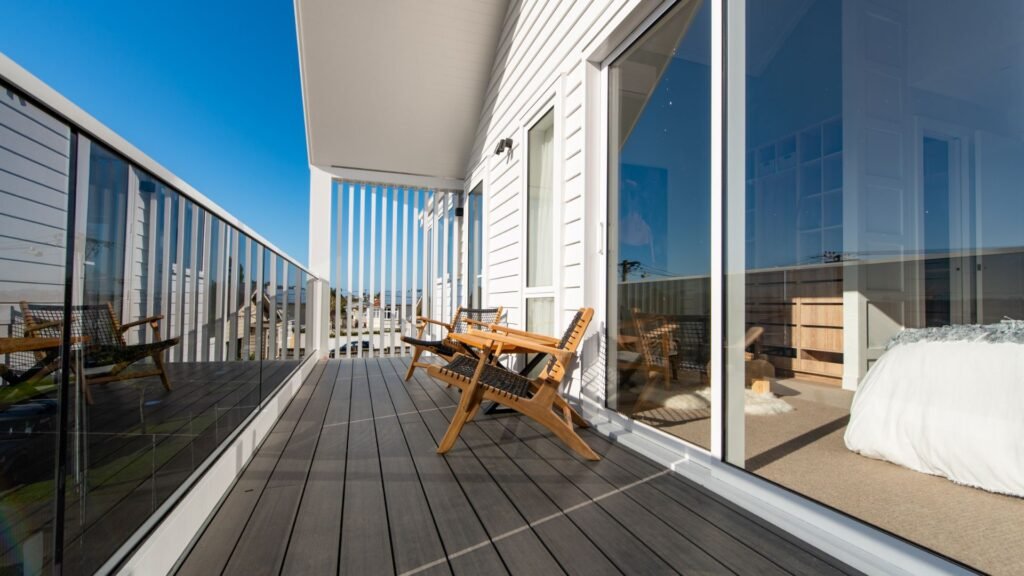
Types Of Low-E Glass
When choosing Low-E glass for your home, it’s important to understand that not all Low-E glass is the same. There are two main types available: soft-coat Low-E glass and hard-coat Low-E glass. Each comes with its own strengths, drawbacks, and suitability depending on your climate and home design.
Soft-Coat Low-E Glass
Soft-coat Low-E glass, sometimes called sputter-coated glass, is made by applying a very thin metallic layer onto the surface of the glass inside a vacuum chamber. This type of coating is more advanced and provides better thermal performance compared to hard-coat glass.
Pros
- Offers higher insulation performance, making it excellent for cold winters.
- Provides stronger UV protection, helping to reduce fading of carpets, curtains, and furniture.
- More effective at keeping indoor heat inside during winter and blocking excess solar heat during summer.
Cons
- Less durable than hard-coat glass because the coating is more delicate.
- Usually requires being sealed within a double-glazed unit for protection.
- Can be more expensive due to the advanced manufacturing process.
Hard-Coat Low-E Glass
Hard-coat Low-E glass, also known as pyrolytic Low-E glass, is made during the glass manufacturing process when a special coating is fused onto the hot glass surface. This makes the coating tougher and more durable.
Pros
- Extremely durable and resistant to damage during installation.
- Can sometimes be used as single-pane glass.
- More affordable compared to soft-coat glass.
Cons
- Lower insulation performance compared to soft-coat glass.
- Less effective at blocking UV and infrared rays.
- Can allow more heat transfer, making it less efficient in extreme climates.
Which Type Is More Common In NZ And Why
In New Zealand, soft-coat Low-E glass is becoming the preferred option, especially in double-glazed windows for modern homes. The reason is simple: New Zealand’s climate varies significantly between regions, with cold winters in the South Island and hot, sunny summers in the North Island. Homeowners want year-round comfort, and soft-coat glass delivers better thermal performance and energy savings.
That said, hard-coat Low-E glass can still be found, particularly in older installations or situations where durability and lower cost are more important than top-tier performance. Builders and homeowners focused on long-term efficiency, sustainability, and compliance with NZ building standards are increasingly choosing soft-coat Low-E glass as the standard.
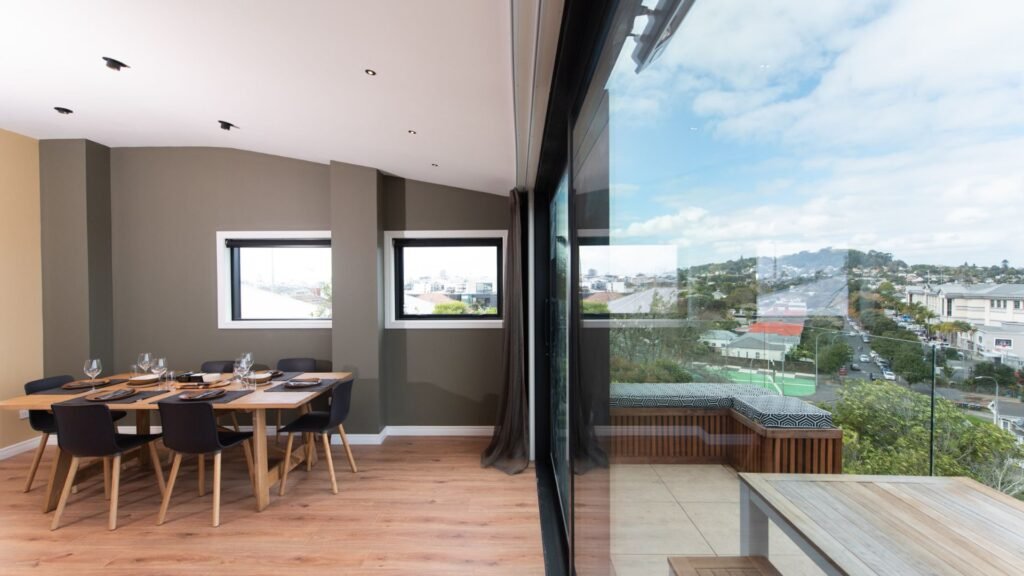
Benefits Of Low-E Glass For Kiwi Homes
When you’re investing in your home, windows play a bigger role than most people realize. Choosing Low-E glass isn’t just about upgrading your windows, it’s about improving the way your entire home feels and performs. For Kiwi homeowners, the advantages go far beyond appearances.
Improved Insulation And Comfort
Low-E glass provides better insulation by reducing the amount of heat that escapes during winter and controlling how much solar heat enters during summer. This balance keeps your home warmer when it’s cold and cooler when it’s hot, without relying too heavily on heaters or air conditioners. The result is a more comfortable indoor environment all year round, no matter where you live in New Zealand.
Lower Energy Bills From Less Heating And Cooling
Energy costs in New Zealand continue to rise, and heating or cooling is one of the biggest expenses in any household. By improving thermal performance, Low-E glass reduces the need for constant heating in winter or air conditioning in summer. Over time, the savings on electricity and gas bills can make a noticeable difference, helping to offset the initial investment in new windows.
Reduced Condensation And Dampness
Condensation is a common problem in many Kiwi homes, especially during colder months. It can lead to dampness, mould, and unhealthy indoor air. Low-E glass helps minimize condensation by maintaining a more stable interior glass temperature, reducing the chance of moisture forming on the inside surface. This contributes to a drier, healthier living environment.
Protects Furniture, Curtains, And Flooring From Sun Fade
The sun’s UV rays can cause gradual fading of curtains, flooring, and furniture over time. Low-E glass blocks a large portion of harmful UV radiation while still allowing natural light to brighten your rooms. This means your interiors last longer and continue looking their best without sacrificing that open, sunlit feel.
Long-Term Home Value Improvement
Installing Low-E glass is not only about immediate comfort and savings, it’s also an investment in the future value of your property. Energy-efficient features are highly attractive to buyers in New Zealand, and homes with upgraded windows often stand out in the market. By making your home more comfortable, sustainable, and cost-effective, Low-E glass can help increase its long-term resale value.
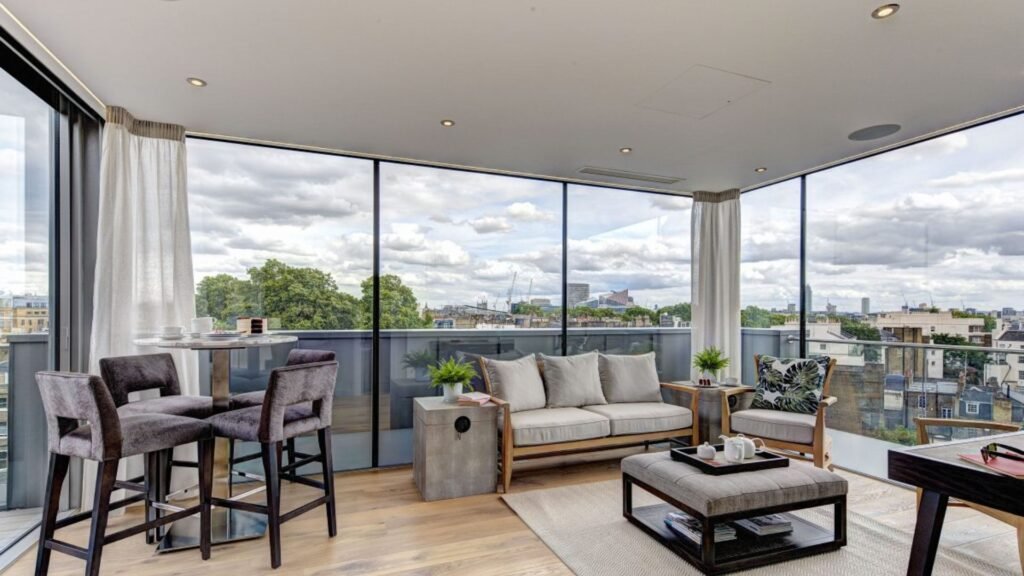
Low-E Glass Vs Standard Double Glazing
When you’re looking at window options for your home, you’ll often hear about double glazing and Low-E glass. Both improve insulation compared to single-pane windows, but they don’t perform in the same way. Understanding the difference helps you decide whether upgrading to Low-E glass is worth it for your home.
Key Differences Explained In Simple Terms
Standard double glazing uses two panes of glass with a gap filled with air or gas in between. This setup slows down heat transfer, keeping warm air inside during winter and blocking some heat in summer.
Low-E glass, on the other hand, includes an invisible coating on one of the panes. This coating reflects heat energy, which means in winter it bounces heat back into your home, and in summer it reduces how much solar heat comes in. You still get plenty of natural light, but your home feels more comfortable year-round.
- Think of it this way: double glazing is like wearing a good jacket, while Low-E glass is like adding a special lining that adapts to both cold and heat.
Why Low-E Glass Offers Better Performance Than Standard Glazing
The real advantage of Low-E glass lies in its ability to control both heat and light. Standard double glazing helps, but it doesn’t stop infrared heat or harmful UV rays as effectively. Low-E coatings improve insulation while also protecting furniture, carpets, and curtains from fading caused by sunlight.
In New Zealand’s varied climate, cold in the south, humid and hot in the north, this extra layer of performance makes a noticeable difference. Homes with Low-E glass often use less energy for heating and cooling, which means lower power bills and a smaller carbon footprint.
Is Upgrading Worth It? (Pros And Cons For Homeowners)
Upgrading to Low-E glass usually costs more upfront than standard double glazing, but many homeowners see it as an investment. Here are the main points to consider:
Pros
- Better insulation for year-round comfort.
- Lower energy bills from reduced heating and cooling needs.
- Protection against UV damage to furniture and flooring.
- Adds long-term value to your home, especially for future buyers.
Cons
- Higher initial cost compared to standard double glazing.
- May not be essential for homes in very mild climates.
- Retrofits can be more complex depending on existing window frames.
For most Kiwi homeowners, especially those building new homes or upgrading for energy efficiency, Low-E glass offers performance that standard double glazing can’t match. While the cost is higher, the comfort, savings, and durability make it a smart choice for the long term.
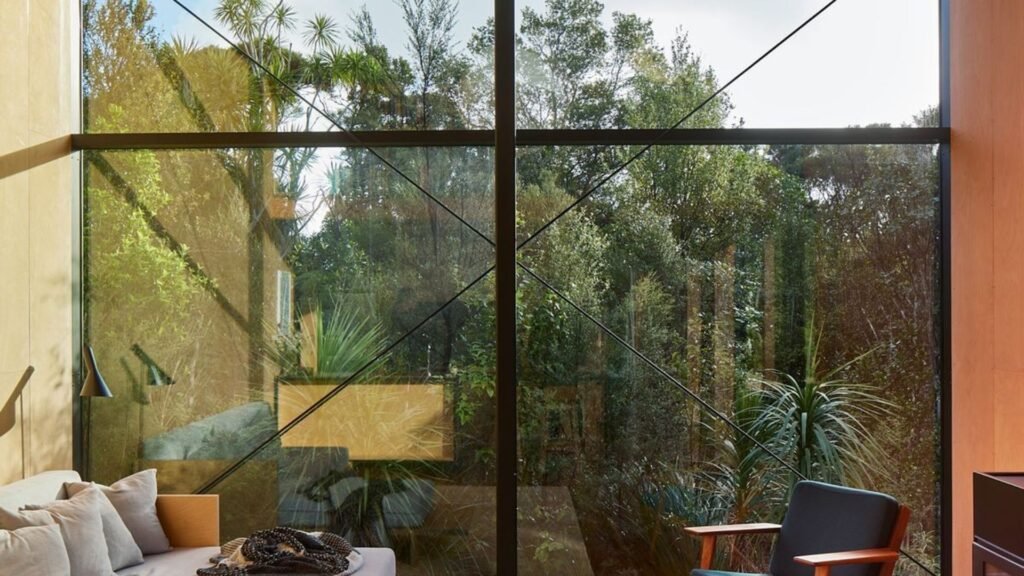
Cost Of Low-E Glass In NZ
When considering Low-E glass for your home, cost is often one of the first questions that comes to mind. While exact figures vary depending on the supplier, installation company, and region, it’s important to think of Low-E glass not just as an expense but as a long-term investment in your home’s comfort and energy efficiency. In New Zealand, homeowners are increasingly choosing Low-E glass because of its ability to reduce heating and cooling bills, protect interiors from sun damage, and add value to the property.
General Overview Of Pricing
Low-E glass usually comes at a higher price point compared to standard glass or basic double glazing. The added cost reflects the advanced coating technology that improves insulation and energy performance. For most homeowners, the difference in price is noticeable at the start, but the long-term value it brings often justifies the initial spend. It’s best to view the cost as part of creating a healthier, more comfortable, and more energy-efficient home.
Factors Affecting Cost
Several key factors influence how much Low-E glass will cost in New Zealand:
- Window size and quantity: Larger windows or a greater number of windows naturally increase costs.
- Type of Low-E coating: Hard-coat glass is generally more affordable but offers lower insulation than soft-coat glass, which provides superior energy savings.
- Installation requirements: Costs can vary depending on whether the glass is being installed in a new build or retrofitted into existing frames. Retrofits may require additional work, which can increase labor costs.
- Frame material: Timber, aluminum, or uPVC frames may all have different compatibility and installation costs when fitted with Low-E glass.
Compare Cost Vs Savings Over Time
While the upfront cost of Low-E glass is higher, the savings it delivers over time can be significant. Homes with Low-E windows often see reduced reliance on heating systems in winter and less need for cooling in summer. This means lower power bills throughout the year. Over time, these savings can offset the initial cost, making Low-E glass a financially smart choice. Beyond financial benefits, you also gain non-monetary value such as increased comfort, reduced condensation, and protection against fading of furniture and flooring.
By thinking of Low-E glass as a long-term investment rather than a one-time expense, many New Zealand homeowners find that the benefits far outweigh the costs. It’s a practical option for those looking to future-proof their homes and enjoy a healthier, more energy-efficient living environment.
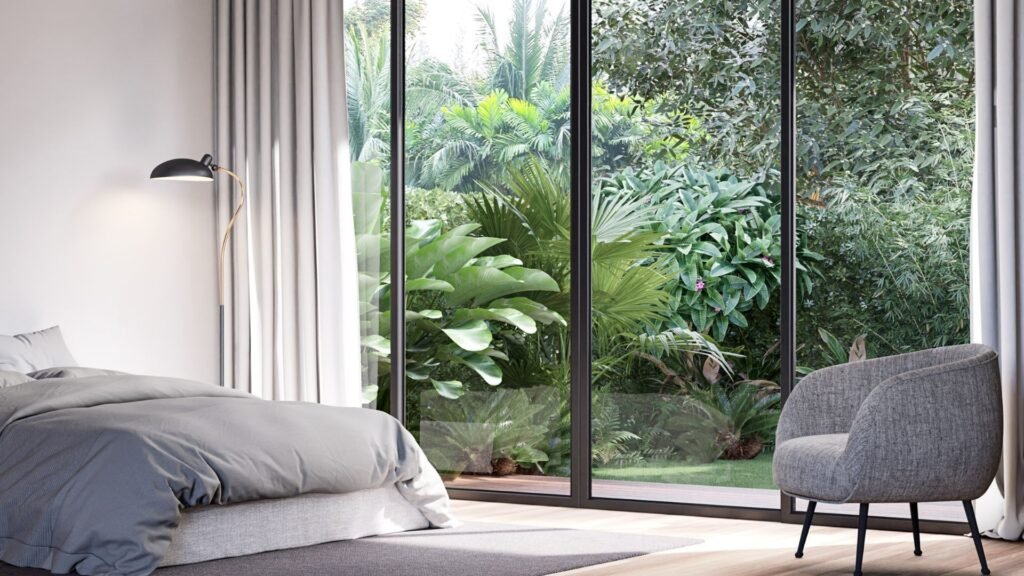
Installation And Availability In NZ
When considering Low-E glass for your home, it’s important to understand where you can get it, how it can be installed, and what to expect in terms of durability. Low-E glass is widely available across New Zealand, and more suppliers are adding it to their product ranges as demand for energy-efficient housing grows. Below, we’ll look at common suppliers, key questions to ask before making a purchase, retrofitting options, and warranty considerations.
Common Suppliers And Installers In New Zealand
Several well-known glass and window companies in New Zealand now supply and install Low-E glass. Leading providers often include national brands as well as regional installers who specialize in double glazing and energy-efficient solutions. Many builders also recommend Low-E glass as part of new housing projects because it meets modern building code requirements for insulation. Homeowners can find options through both local glazing specialists and larger suppliers that serve the entire country.
What To Ask When Choosing Low-E Glass For Your Home
Before deciding on Low-E glass, it’s helpful to ask the right questions:
- Which type of Low-E glass do you recommend for my climate?
- Can you explain the performance difference between soft-coat and hard-coat Low-E glass?
- Is the glass compatible with my current window frames?
- How much energy savings can I realistically expect?
- What is the estimated timeline for installation?
Asking these questions ensures you understand both the upfront cost and the long-term benefits. It also helps you choose a supplier who is knowledgeable and transparent about product performance.
Can It Be Retrofitted Into Existing Frames?
One of the most common questions homeowners ask is whether Low-E glass can be installed in existing frames. The good news is that in many cases, retrofitting is possible. If your window frames are in good condition, installers can often replace the glass panels without replacing the entire frame. This makes it a cost-effective option for homeowners who want to upgrade insulation without undergoing a full renovation. That said, older or damaged frames may need to be replaced to ensure the glass performs as intended.
Warranties And Durability Considerations
When investing in Low-E glass, durability and warranty coverage are important factors. Most reputable suppliers in New Zealand provide warranties that cover issues such as glass defects, seal failure in double-glazed units, and coating performance. Warranties typically range from 10 to 20 years, depending on the manufacturer. Since Low-E coatings are protected within the layers of glass, they generally last as long as the window itself, requiring little to no special maintenance. Always ask your supplier to outline the full warranty terms in writing before installation.
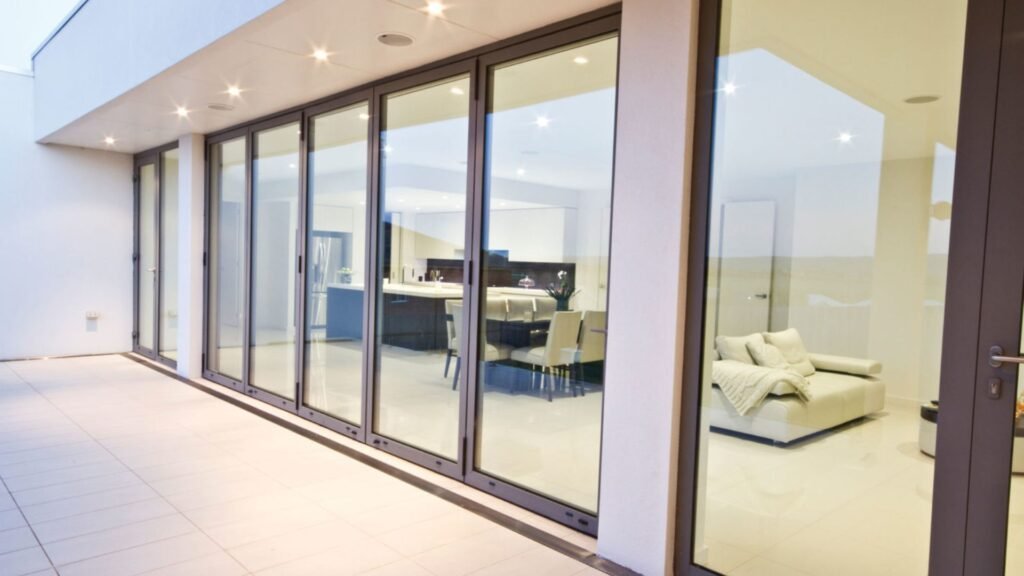
Common Myths About Low-E Glass
When people hear about Low-E glass for the first time, they often come across mixed opinions or assumptions. These myths can stop homeowners from making an informed decision. Let’s clear up the most common misconceptions so you know what Low-E glass really offers.
“It Makes Rooms Too Dark.”
One of the biggest misconceptions is that Low-E glass blocks too much light and leaves your home looking dull. The truth is, the Low-E coating is a microscopically thin layer, so thin that it’s practically invisible to the naked eye. It is designed to reflect heat, not sunlight. This means natural light still fills your home, creating bright, comfortable spaces. In fact, most people cannot tell the difference between standard glass and Low-E glass when it comes to brightness.
“It’s Only For Cold Climates.”
Many people assume Low-E glass is useful only in countries with freezing winters. While it does help retain warmth in colder months, its benefits go far beyond that. In New Zealand, where we experience both chilly winters and warm, humid summers, Low-E glass works year-round. It keeps heat inside during winter and reflects unwanted solar heat during summer, making it suitable for all climates across the country. Whether you live in Christchurch or Auckland, Low-E glass supports comfort and energy efficiency in every season.
“It Doesn’t Make Much Difference.”
Some homeowners think Low-E glass is just a marketing buzzword and that it performs no better than standard glass. The reality is very different. Studies and real-life examples show that Low-E glass can significantly reduce heat loss, cut energy bills, and improve overall comfort. It also minimizes condensation and protects interiors from UV damage. Over time, these benefits add up to noticeable savings and a healthier living environment. Homeowners who install Low-E glass often report warmer winters, cooler summers, and reduced reliance on heating and cooling systems.

Is Low-E Glass Right For Your Home?
Choosing the right windows is a big decision for any homeowner. Low-E glass has become one of the most talked-about options in New Zealand, but is it the right fit for your home? The answer depends on your budget, climate, and long-term goals. Below, we’ll look at when investing in Low-E glass makes sense, how it works for new builds compared to renovations, and why it’s a smart choice for energy-conscious families.
When It’s Worth Investing In Low-E Glass
Low-E glass is worth considering if you want to improve comfort and reduce energy costs over the long term. While the upfront price is higher than standard glass, the savings on heating and cooling often pay off within a few years. It’s especially valuable if your home has large windows that let in a lot of sun or if you’re building with an open-plan design. Homes in regions with strong seasonal changes, like Christchurch or Queenstown, see the most noticeable benefits.
Best Suited For New Builds Vs Renovations
Low-E glass is easiest to install during a new build. Builders can integrate it directly into double or triple-glazed units, ensuring your home meets modern energy efficiency standards from day one. Renovations can also include Low-E glass, but retrofitting may cost more depending on the type of frames you already have. If you’re replacing old windows or dealing with drafts and condensation, upgrading to Low-E glass during renovations can significantly improve insulation and comfort.
Ideal For Energy-Conscious Families Or Those In Extreme Nz Climates
If you’re committed to lowering your household’s carbon footprint, Low-E glass is a strong step forward. It reduces the need for heaters and air conditioning, helping families use less power while maintaining a consistent indoor temperature. In colder southern areas, it prevents heat from escaping, while in warmer northern regions, it helps block unwanted heat from entering. Families living in areas with extreme weather, such as frosty winters or hot, humid summers, will notice the difference most quickly.
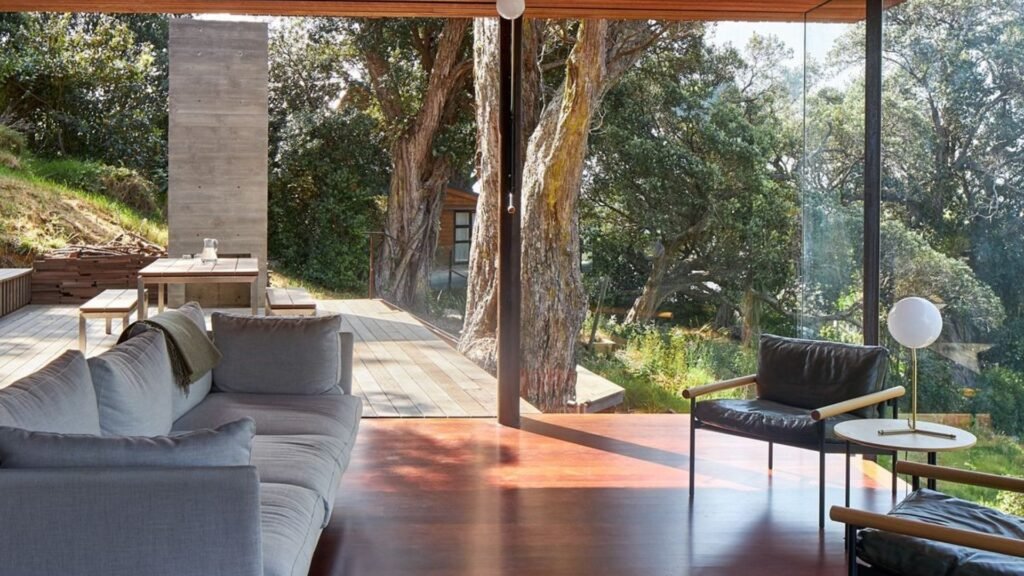
Practical Tips For Homeowners
When it comes to choosing Low-E glass for your home, a little preparation can make the decision easier and ensure you get the best results. Below are practical tips to guide you before, during, and after installation.
Questions To Ask Before Buying
Before investing in Low-E glass, take time to ask the right questions. Start by asking your supplier or installer about the type of Low-E coating they use, soft-coat or hard-coat, and why it suits your climate. Ask about the energy performance ratings so you can compare options, especially if you want to balance insulation with natural light. It’s also worth asking whether the glass can be retrofitted into your existing frames or if new windows are required. Finally, check on warranty coverage, expected lifespan, and how the product performs in New Zealand’s varied weather conditions. These questions help you make an informed decision and avoid unexpected costs.
How To Maintain Low-E Glass
Caring for Low-E glass is simple and doesn’t require special cleaning techniques. Use a soft, non-abrasive cloth or sponge with mild soap and water to remove dirt or dust. Avoid harsh chemicals or abrasive pads that could scratch the surface. Because the Low-E coating is usually sealed inside the double glazing, it’s well protected and doesn’t wear off. Regular cleaning every few months is enough to keep the glass looking clear and performing well. By maintaining your windows properly, you’ll extend their lifespan and continue enjoying the benefits of better insulation and energy savings.
Pairing With Curtains, Blinds, Or Other Window Treatments
Low-E glass works well on its own, but pairing it with the right window treatments can enhance comfort and style. Curtains or thermal-backed blinds add an extra layer of insulation, which is especially useful in colder regions of New Zealand. Sheer curtains can soften sunlight while still letting in natural light, complementing the UV protection already offered by Low-E glass. In warmer climates, pairing Low-E glass with reflective blinds can help reduce heat buildup even further. Choosing window coverings that match your lifestyle not only improves energy efficiency but also creates a more comfortable and inviting home environment.
Curious about whether Low-E glass is right for your renovation or new build? Visit Double Glazing Hamilton and let us help you find the perfect solution.
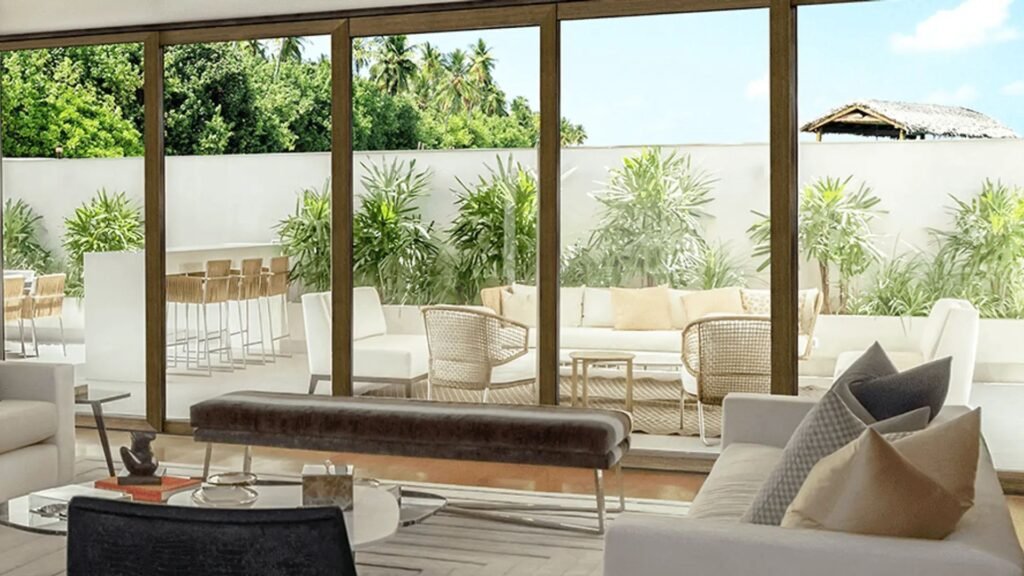
FAQs: About What Is Low-E Glass In NZ?
What is Low-E glass?
Low-E glass, short for low emissivity glass, is window glass coated with a thin, invisible layer that reflects heat while allowing natural light to pass through. It helps keep homes warmer in winter and cooler in summer.
Why is Low-E glass popular in New Zealand?
New Zealand’s mix of cold southern winters and humid northern summers makes energy efficiency important. Low-E glass helps reduce heating and cooling costs, improves comfort, and supports sustainable housing goals.
How does Low-E glass work?
The coating on Low-E glass controls how heat and light pass through. It reflects indoor heat back inside during winter and prevents too much solar heat from entering during summer. This creates a more stable indoor temperature.
What are the main benefits of Low-E glass?
Benefits include lower energy bills, improved comfort, reduced condensation, protection against UV damage to furniture, and added long-term value to homes.
Is Low-E glass the same as double glazing?
No. Double glazing is two panes of glass with a gap in between for insulation. Low-E glass can be part of double glazing but offers additional benefits by improving insulation and reducing UV and infrared light transfer.
Can Low-E glass be used in existing homes?
Yes. Low-E glass can often be retrofitted into existing window frames, although the cost and feasibility depend on the type of frame and installation requirements.
Does Low-E glass make rooms darker?
No. The coating is nearly invisible and does not significantly affect the amount of natural light entering a room. It maintains brightness while improving efficiency.
How much does Low-E glass cost in NZ?
Costs vary depending on window size, type of Low-E coating, and installation requirements. While it is more expensive than standard glass, the long-term energy savings often outweigh the upfront investment.
What types of Low-E glass are available?
The two main types are hard-coat Low-E glass and soft-coat Low-E glass. Hard-coat is more durable, while soft-coat offers better insulation performance. The choice depends on climate, budget, and home design.
How do I maintain Low-E glass?
Maintenance is simple. Clean it the same way you would standard glass, using non-abrasive cloths and mild cleaners. The Low-E coating is protected within the glass layers and does not require special care.
Conclusion
Low-E glass is becoming more popular across New Zealand because it offers a practical solution to some of the most common challenges homeowners face, keeping houses warm during cold winters, cool during hot summers, and reducing the need for constant heating and cooling. By improving insulation, lowering energy bills, and protecting interiors from UV damage, Low-E glass not only creates a more comfortable living environment but also contributes to healthier, more sustainable homes. For anyone building or renovating, investing in this type of glass can provide long-term value and peace of mind. If you’re considering whether Low-E glass is right for your home, the best step is to speak with a local glass supplier or builder who can guide you through the options and recommend the best fit for your climate and budget.
